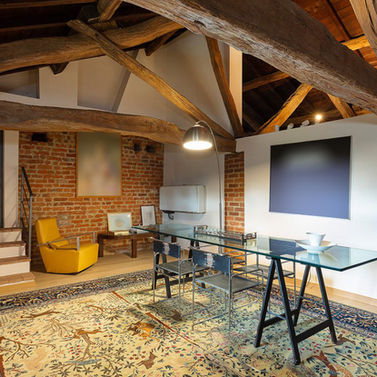
HISTORY

The first certain news of the existence of the Castle dates back to a parchment dated 28 February 1122 , but it had existed for a long time before that, as can be seen from the remains of the oldest part, dating back to the 10th century, incorporated into a 14th century reconstruction.
The Castle belonged half to the Church of the SS. Trinità di Pavia, partly to the Church of S. Maria di Campomorto and the remaining part to the noble families of Landriani and Mantegazza, two of the oldest and most illustrious families in Milan.
Vidigulfo was part of those lands that extended to the border of the Pavia territory, eternally disputed by Milan and Pavia, called "Common Lands" or " Lost Lands ", furthermore it was equipped with all the resources of life and defense and fortified with a castle with tower, suitable for defense, shelter and storage of food and weapons.
In 1217, right in the Castle of Vidigulfo, a vain attempt was made to conclude a peace treaty between the consuls of the enemy municipalities of Pavia, Milan and Piacenza with the imperial army of Federico I known as Barbarossa.
A fact of considerable historical importance which highlights the representative role that the fortress played at that time, which as time passed, would increasingly fulfill both administrative and residential functions.
The tower is mentioned in a document from 1329 when the Castle was the exclusive dominion of Giacomino Landriani following the imperial investiture of Ludovico the Bavarian.
From this moment the Landrians retained ownership of the Castle in the following centuries.
There have been many changes of ownership over the centuries, but all between the members of the Landriani family who still maintained their high level of nobility in the 16th century.
Around the first half of the 19th century, Luigi Stabilini became the new owner of the Castle and maintained possession of it until 1960. It was not possible to ascertain the fate of the Landriani family but it is useful to remember that 1786 marked the cessation of the feudal system in Lombardy.
At the end of the 1960s the Castle was purchased by the archaeologist Aurelio Codara who started the renovation works due the terrible state of the building.
After Codara's death, the Castle passed into the hands of the current owner, who continued the works begun a few years earlier.
HISTORICAL PHOTOS
TODAY





















